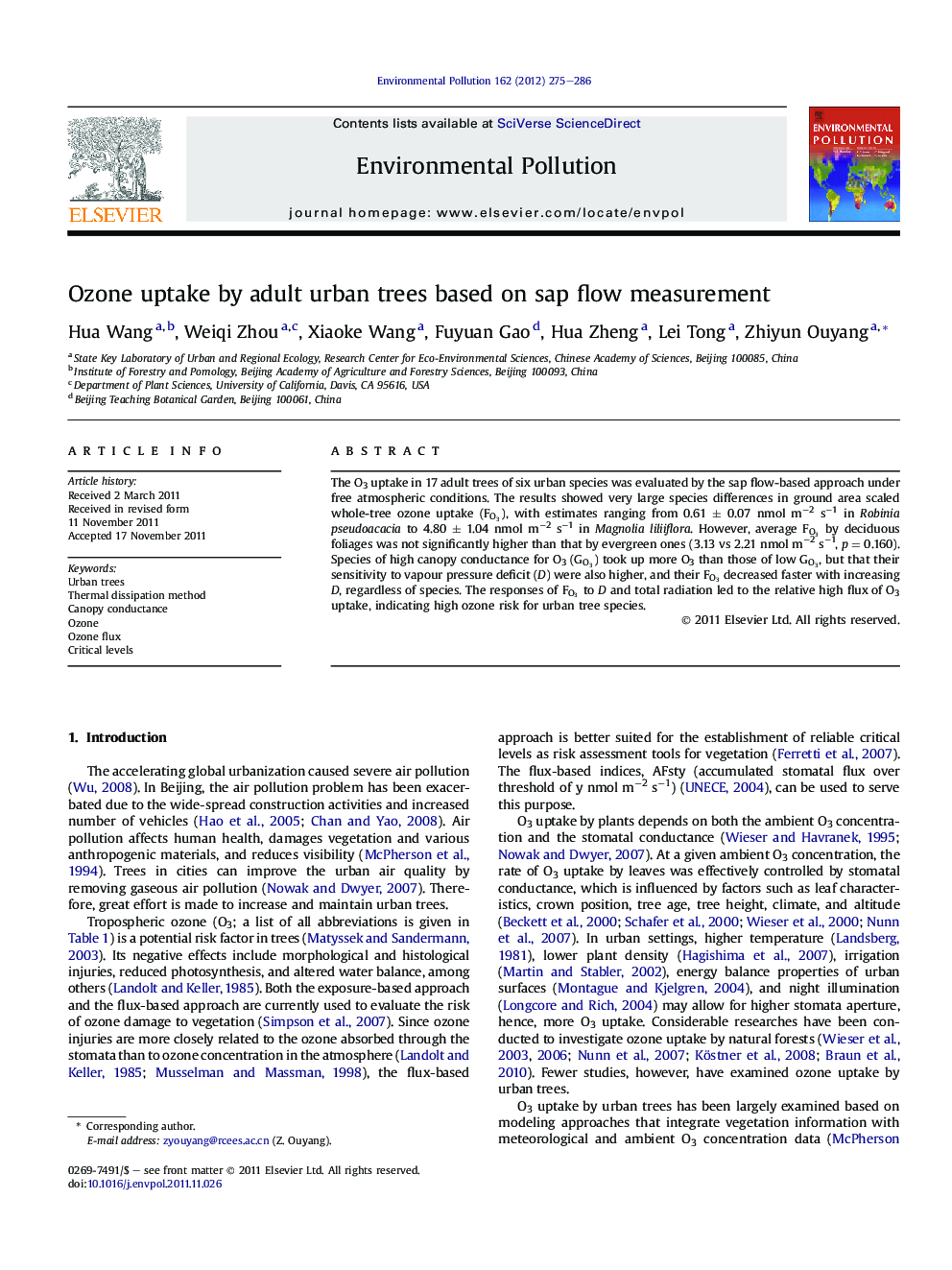| Article ID | Journal | Published Year | Pages | File Type |
|---|---|---|---|---|
| 4424982 | Environmental Pollution | 2012 | 12 Pages |
The O3 uptake in 17 adult trees of six urban species was evaluated by the sap flow-based approach under free atmospheric conditions. The results showed very large species differences in ground area scaled whole-tree ozone uptake (FO3FO3), with estimates ranging from 0.61 ± 0.07 nmol m−2 s−1 in Robinia pseudoacacia to 4.80 ± 1.04 nmol m−2 s−1 in Magnolia liliiflora . However, average FO3FO3 by deciduous foliages was not significantly higher than that by evergreen ones (3.13 vs 2.21 nmol m−2 s−1, p = 0.160). Species of high canopy conductance for O3 (GO3GO3) took up more O3 than those of low GO3GO3, but that their sensitivity to vapour pressure deficit (D ) were also higher, and their FO3FO3 decreased faster with increasing D , regardless of species. The responses of FO3FO3 to D and total radiation led to the relative high flux of O3 uptake, indicating high ozone risk for urban tree species.
► O3 uptake by urban trees varied considering contrasting species and study period. ►The responses of GO3GO3 to microclimate lead to relative high O3 uptake by urban trees. ►Many urban species are susceptible to O3 damage. ►The annual O3 uptake in our study is greatly less than that from modeling approaches. ►The difference suggests considering the species-specific flux in O3 risk assessment.
